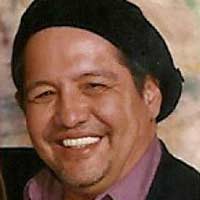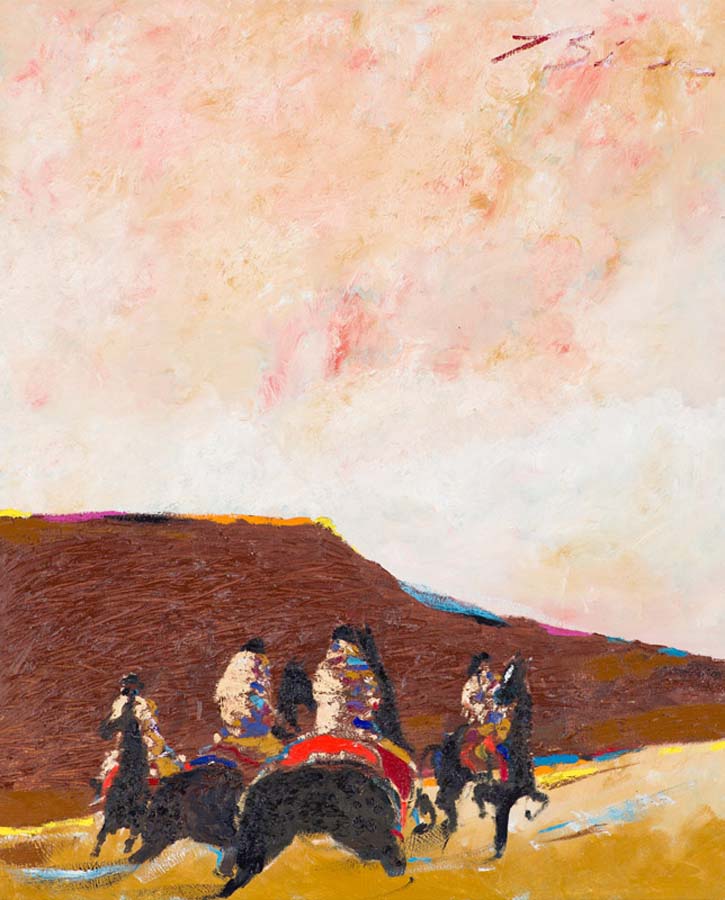Earl Biss
 Earl Biss was born in Washington State in 1947. Biss was a Crow Indian who spent summers on the reservation in Montana where he was raised by his Grandmother. During his time on the reservation, Biss absorbed tribal legends and history from the elders, roamed the sweeping mountain landscape, and found inspiration for his finest works. As an adult, he returned frequently to live and paint. On October 18, 1998, he died from a stroke while in his studio painting.
Earl Biss was born in Washington State in 1947. Biss was a Crow Indian who spent summers on the reservation in Montana where he was raised by his Grandmother. During his time on the reservation, Biss absorbed tribal legends and history from the elders, roamed the sweeping mountain landscape, and found inspiration for his finest works. As an adult, he returned frequently to live and paint. On October 18, 1998, he died from a stroke while in his studio painting.
Earl Biss was a profound contributor to the explosion of Southwestern Art in the last half of the 20th Century, and particularly for the rise of contemporary Native American Art. His compelling portraits of Plains Indian horsemen, his phenomenal grasp of the medium of oil painting, and above all the sheer exuberance of his brushwork earned him a place in the history books of modern art. He was a central figure in the miracle generation of students at the Institute of American Indian Arts in Santa Fe during the late sixties. Together, these brilliant young artists changed the face of Indian Art and Southwestern Art, injecting vivid color and a modernistic sensibility into what had been a sedate genre of linear realism. Biss was known as the catalyst for this remarkable group. He went on to make it famous worldwide.
A painterly artist, Earl Biss’ compositions often begin with a realistic investigation of Indian camp rivalries, midnight raids, the hunt and also the severe winters in the Big Horn Mountains in the vicinity of Yellowstone. His paintings have a dream-like, abstract quality with Indian figures merging with the landscape. He worked on numerous paintings, sometimes as many as twenty, simultaneously.
 Click for more
Click for more 